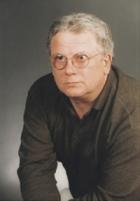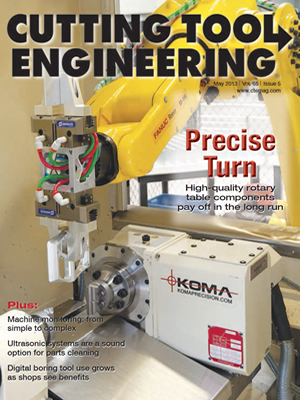I love my job. I love my job. I love my job. Just keep repeating it to yourself and you’ll be convinced. Do you know how many times I’ve repeated it over the years? At least 428 times, or once a month for more than 36 years and 8 months!
I started saying it while operating a turret lathe in a dark, dingy machine shop. Oil from the machines permeated the air. Forget about mist collectors. I would come home with a rash all over my body from the airborne oil.
One day when machining hex stock for some fittings, I turned on the oil coolant and oil sprayed my face and glasses. I cleaned up, diligently went back to my machine and repeated the same process. Guess what? I received another face full of oil. I cleaned up again and, after my third oil shower, I remembered the definition of insanity: Repeatedly doing the same thing and expecting a different result. I quit that day. I guess I really didn’t really love that job after all.
Another time, I started as a manufacturing engineer at a company that had purchased its first two CNC machining centers 6 months earlier. Well, the one worker who learned to run the machining centers and used to run the Bridgeport mill had a couple questions for me. How dare I suggest using carbide cutters instead of the HSS tools he was running? How dare I suggest applying indexable cutters?
After we continued to butt heads day after day, I would actually come home talking to myself. One day, after a particularly high level of head butting, my wife fell over, laughing hysterically, after she asked me how my day was and I couldn’t get the words out of my mouth because I was stuttering so badly. Eventually, the operator and I reached a mutual understanding and became good friends. And I started to love my job.
While working at another company as a manufacturing engineer, I determined the owner was an entrepreneurial type because he owned a few other businesses along with the machine shop. If run correctly, the machine shop could have been a moneymaker. But it wasn’t. For example, the manufacturing engineers—there were three of us—had to convince the shop manager why he should run machining jobs requested by our customers. It was for him to decide? Give me a break! I don’t know who sold the owner on that philosophy, but the owner should have gotten his money back.
The straw that broke the camel’s back was when the owner hired an engineering manager with no engineering experience—let alone managerial experience—and who couldn’t tell a mill from a lathe. After a few months, I stopped loving my job and left.
In addition, how about loving to work with a bunch of prima donnas on the shop floor? Yeah, they’re the ones who’ve been working at the same company for years after having worked at one other place, doing something totally different. Typically, the companies with prima donnas are no longer in existence or their facilities were combined with one that has employees who give a damn. The prima donnas think they know it all, but have blinders on and aren’t open to suggestions. I’ve tried working as a manufacturing engineer at a couple of places that employed workers like that, but without management backing, I wasn’t able to succeed.
I love my job. I love my job. I love my job. If I haven’t said it 428 times, it’s certainly been close. Don’t tell me you don’t feel this way sometimes. I don’t really need to remind myself that often. I do love my job. If I didn’t, what would I do? CTE
About the Author: Mike Deren is a manufacturing engineer/project manager and a regular CTE contributor. He can be e-mailed at [email protected].Related Glossary Terms
- backing
backing
1. Flexible portion of a bandsaw blade. 2. Support material behind the cutting edge of a tool. 3. Base material for coated abrasives.
- centers
centers
Cone-shaped pins that support a workpiece by one or two ends during machining. The centers fit into holes drilled in the workpiece ends. Centers that turn with the workpiece are called “live” centers; those that do not are called “dead” centers.
- computer numerical control ( CNC)
computer numerical control ( CNC)
Microprocessor-based controller dedicated to a machine tool that permits the creation or modification of parts. Programmed numerical control activates the machine’s servos and spindle drives and controls the various machining operations. See DNC, direct numerical control; NC, numerical control.
- coolant
coolant
Fluid that reduces temperature buildup at the tool/workpiece interface during machining. Normally takes the form of a liquid such as soluble or chemical mixtures (semisynthetic, synthetic) but can be pressurized air or other gas. Because of water’s ability to absorb great quantities of heat, it is widely used as a coolant and vehicle for various cutting compounds, with the water-to-compound ratio varying with the machining task. See cutting fluid; semisynthetic cutting fluid; soluble-oil cutting fluid; synthetic cutting fluid.
- high-speed steels ( HSS)
high-speed steels ( HSS)
Available in two major types: tungsten high-speed steels (designated by letter T having tungsten as the principal alloying element) and molybdenum high-speed steels (designated by letter M having molybdenum as the principal alloying element). The type T high-speed steels containing cobalt have higher wear resistance and greater red (hot) hardness, withstanding cutting temperature up to 1,100º F (590º C). The type T steels are used to fabricate metalcutting tools (milling cutters, drills, reamers and taps), woodworking tools, various types of punches and dies, ball and roller bearings. The type M steels are used for cutting tools and various types of dies.
- lathe
lathe
Turning machine capable of sawing, milling, grinding, gear-cutting, drilling, reaming, boring, threading, facing, chamfering, grooving, knurling, spinning, parting, necking, taper-cutting, and cam- and eccentric-cutting, as well as step- and straight-turning. Comes in a variety of forms, ranging from manual to semiautomatic to fully automatic, with major types being engine lathes, turning and contouring lathes, turret lathes and numerical-control lathes. The engine lathe consists of a headstock and spindle, tailstock, bed, carriage (complete with apron) and cross slides. Features include gear- (speed) and feed-selector levers, toolpost, compound rest, lead screw and reversing lead screw, threading dial and rapid-traverse lever. Special lathe types include through-the-spindle, camshaft and crankshaft, brake drum and rotor, spinning and gun-barrel machines. Toolroom and bench lathes are used for precision work; the former for tool-and-die work and similar tasks, the latter for small workpieces (instruments, watches), normally without a power feed. Models are typically designated according to their “swing,” or the largest-diameter workpiece that can be rotated; bed length, or the distance between centers; and horsepower generated. See turning machine.
- milling machine ( mill)
milling machine ( mill)
Runs endmills and arbor-mounted milling cutters. Features include a head with a spindle that drives the cutters; a column, knee and table that provide motion in the three Cartesian axes; and a base that supports the components and houses the cutting-fluid pump and reservoir. The work is mounted on the table and fed into the rotating cutter or endmill to accomplish the milling steps; vertical milling machines also feed endmills into the work by means of a spindle-mounted quill. Models range from small manual machines to big bed-type and duplex mills. All take one of three basic forms: vertical, horizontal or convertible horizontal/vertical. Vertical machines may be knee-type (the table is mounted on a knee that can be elevated) or bed-type (the table is securely supported and only moves horizontally). In general, horizontal machines are bigger and more powerful, while vertical machines are lighter but more versatile and easier to set up and operate.
- turret lathe
turret lathe
Differs from engine lathe in that the normal compound rest is replaced by pivoting, multitool turrets mounted on the cross slide and tailstock. See lathe.


